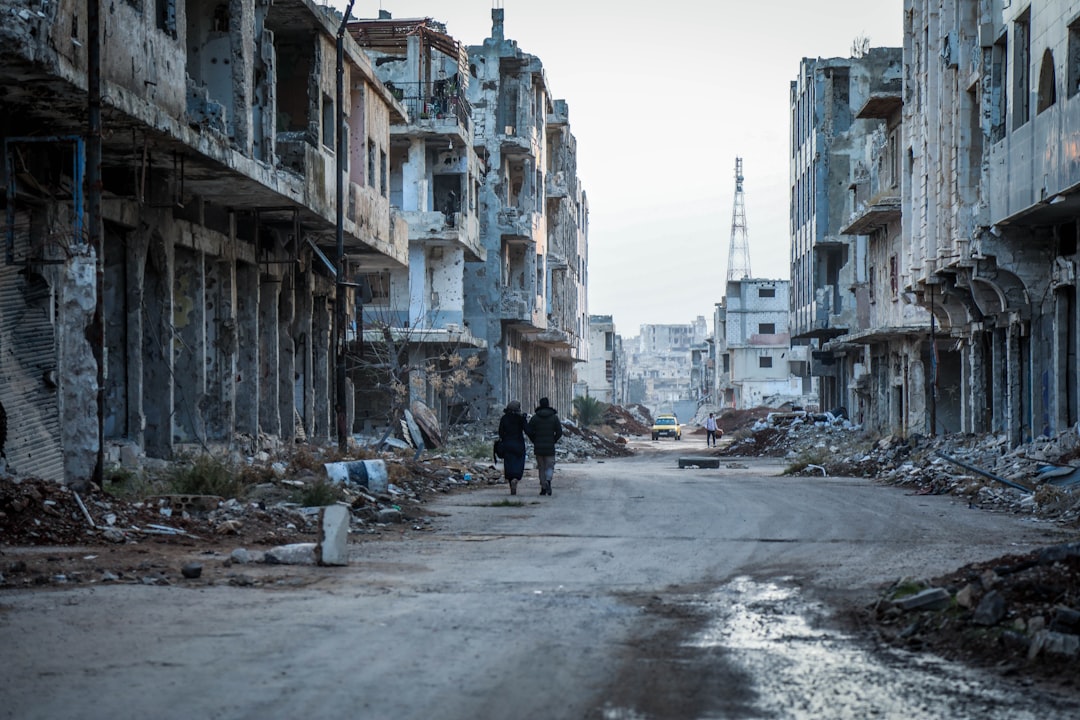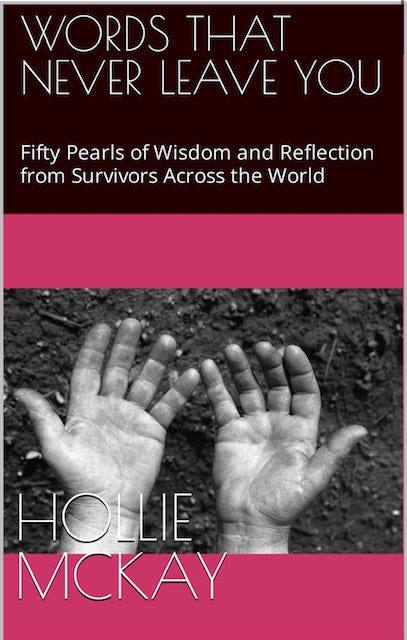I've covered dozens of countries and conflicts. This is by far the worst things I've ever heard.
Remember Syria? The ongoing yet conveniently forgotten war the Bashar a-Assad regime led against its people? While the world may have moved on, restoring ties with the brutal leader and focusing on other fish to fry, hundreds of thousands of Syrians remain trapped in the dungeons of the many political prisons since the flare of war almost twelve years ago. The goings are among the most brutal I have ever heard or encountered as a conflict-focused writer and reporter.
Let us remember.
Before the Syrian revolution ignited in 2011, Muna Mohamed was a schoolteacher in the eastern city of Deir Ez-Zor.
When protesters swarmed the streets in pursuit of democracy and a change in the Bashar Assad-led regime, she took an active role in the media wing – distributing leaflets, crafting statements for the opposition and media advocacy. And then her world and her dignity were ripped apart.
Muna was arrested three times over the next few years – severely beaten with an iron rod, electrocuted, told she must die, constantly threatened she would be raped, and held in solitary confinement.
“I saw an old man stripped naked and beaten until he fainted; they arrested my sister, my teen brother, and my aunt in search of me,” Muna, in her early thirties, told me from exile. “I still live the nightmares in my sleep. There are more than 200,000 detainees, and thousands more are disappeared. Friends of mine have been gone for nine years in the prisons.”
Yet Muna considers herself one of the lucky ones.
Thousands have already died in dirty dungeon prisons spanning the decimated country. Others are still languishing and subjected daily to harrowing methods of abuse that the world has not been able to stop.

The Syrian Network for Human Rights (SNHR), a global non-profit that serves as a leading source on all death toll-related statistics in the war-wracked nation, documents that between March 2011 and September 2019, 14,298 people – including 178 children and 63 women – died in Syria as a result of torture. More than 14,000 victims allegedly met their fate at the hands of Syrian government forces, while Islamic extremist groups killed 57 through torture. Factions of the armed opposition killed a further 43, while 47 were under the control of the Syrian Democratic Forces (SDF), and another 20 were parties the group was unable to identify.
Focusing specifically on the torture practices of the Damascus regime, the new report has pinpointed more than seventy methods of torture used against detainees. The first category highlighted in the SNHR report pertains to 39 methods categorized as “physical torture systemically practiced against those detained in the Syrian regime’s detention center.”
Some horrific methods include scalding hot water on the victim’s abdomen and back, drowning and suffocating. Then there is torture with electricity, which includes using an electric baton directed at the detainee’s abdomen or reproductive organs, tying the detainee to a metal chair with restraints and delivering an electric current to shock the entire body, which leads to severe nervous system damage, involuntary trembling, and permanent trembling.
Then there are the fire-related torture methods, which range from heating a metal skewer to the highest possible temperature and holding it against “sensitive parts of the body,” as well as burning with oil, chemical aids, flame, insecticides, and even gunpowder ignited onto the victim’s body. In other cases, victims are alleged to have been hung in various degrees of suspension for days on end, often whipped and lashed as their body dangles.
Detainees have been made to squat, stand on one foot, and wedged into tires for hours and days, often enduring beating and massive spinal damage. There is a method known as the “flying carpet,” in which the detainee is tied to a folding wooden board and made up of two bendable sections bent towards or away from each other, leading to severe spinal injuries.
Moreover, the Syrian regime is said to implement a technique called “The Crucifixion.” This entails the detainee having their hands and feet tied to a cross “in a grotesque imitation of crucifixion before the beating starts, which particularly targets the reproductive organs.”
That is just the tip of the iceberg in Syrian government prisons. Other documented torture practices include crushing the head, smashing teeth, pulling out nails and gouging eyes, using garden shears to cut off body parts, including reproductive organs, and stapling noses, ears, and lips.
Detainees suffer unspeakably in the Syrian regime’s detention centers. The detainee’s clothes are often worn, soiled, ragged, and torn due to beatings. This is the primary contributor to the spread of illness, disease epidemics, and infections. And because of the narrowness of cells and overcrowding, detainees must take turns to stand, sit and sleep.
SNHR specifies six primary forms of torture within the context of neglect of health care and detention conditions. These include denying access to medicine and treatment, depriving detainees of bathing, toilet and hygiene facilities, depriving detainees of clothes and blankets, human stacking in which detainees are so crammed they virtually pile on top of each other, food deprivation and sleep deprivation.
Sexual violence also remains a glaring cause for concern. In some cases, both males and females are forced to “strip naked during inspection or torture sessions, to inflict as much harm as possible or to insult human dignity,” some experience “rape or inserting tools in reproductive organs,” and in other unfathomable cases detainees are mandated to sexually abuse and even rape their fellow detainees, SNHR claims.
And all of this may pale regarding the array of psychological torture methods. These vary from forcing the detainee to imitate animals – often with a rope tied around their neck – to making them watch and hear the cries of the tortured echo through hollow walls, to keeping deceased detainee’s bodies in cells or forcing others to carry the dead bodies as means of inducing trauma and maximize suffering.
Furthermore, transferring the detainee to a military hospital also comes with its own bundle of atrocities. It points to circumstances in which doctors and nurses are made to “beat the detainee specifically targeting his wounds or broken bones” and “treating the detainee without any sterilization and depriving him of analgesics and medicine.”
While many have died due to torture injuries, there are also many stories of sordid survival – including some former detainees rendered disabled and brain-damaged due to their mistreatment behind bars. Former detainees offered additional testimony – recounting scenes such as one where a child was sprayed with insecticide and set on fire before his body was wrapped in gauze, “and from time to time, they (security) lifted the gauze, peeled his skin with a blade.” Other alleged cases involved medical students extracting bone from a victim’s leg and putting an external fixation device on it.
Of course, for its part, the Syrian government routinely rejects the existence of systematic torture and abuse of detainees. To think this continues as we go about our day renders me with a chilling pause.
I hope that someday, someone will see justice for what was done to them.
In June, the Netherlands and Canada filed an international lawsuit against Syria over allegations of torture at the International Court of Justice (ICJ). According to their application, the Syrian government has committed “countless violations of international law” since the country’s civil war began. Their request is for the court to compel Syria to stop torturing its people as soon as possible. The ICJ would become the first international court to rule on Syrian torture claims if it finds it has jurisdiction.
Meanwhile, guards at a Syrian prison are alleged to have brutally tortured an American aid worker, forcing her into a false confession and sentencing her to death in 2016. The U.S. Department of Justice has reportedly been investigating her death for five years. A federal indictment would mark the first time Washington exposed and charged top Syrian officials with horrific war crimes and lay bare the bones of a vicious and systematic torture program.
As I wrote in my first book, “Only Cry for the Living,” the common thread among the torture victims I met was that their need to flee would never leave them. Their minds and bodies would never again belong to them. They would forever feel the burning urgency to escape from their own skin — only there would be nowhere for them to go. The broken bones might heal, and the open wounds might close, but victims of such merciless torture would never again have a safe place in the world to call home. Their flesh would be the prison walls against which their mind would thrash, but they would not be able to run.
PLEASE CONSIDER A PAID SUBSCRIPTION TO THIS SUBSTACK TO HELP KEEP INDEPENDENT, AGENDA-FREE WRITING AND JOURNALISM ALIVE. THANK YOU SO MUCH FOR YOUR SUPPORT.
For speaking queries please contact meta@metaspeakers.org
Follow me on Instagram and Twitter for more updates
HOLLIE’S BOOKS (please leave a review)
** Short read of meaningful lessons gleaned from the ordinary forced to become extraordinary
Order your copy of “Afghanistan: The End of the US Footprint and the Rise of the Taliban Rule” due out this fall.
For those interested in learning more about the aftermath of war, please pick up a copy of my book “Only Cry for the Living: Memos from Inside the ISIS Battlefield.”
If you want to support small businesses:





